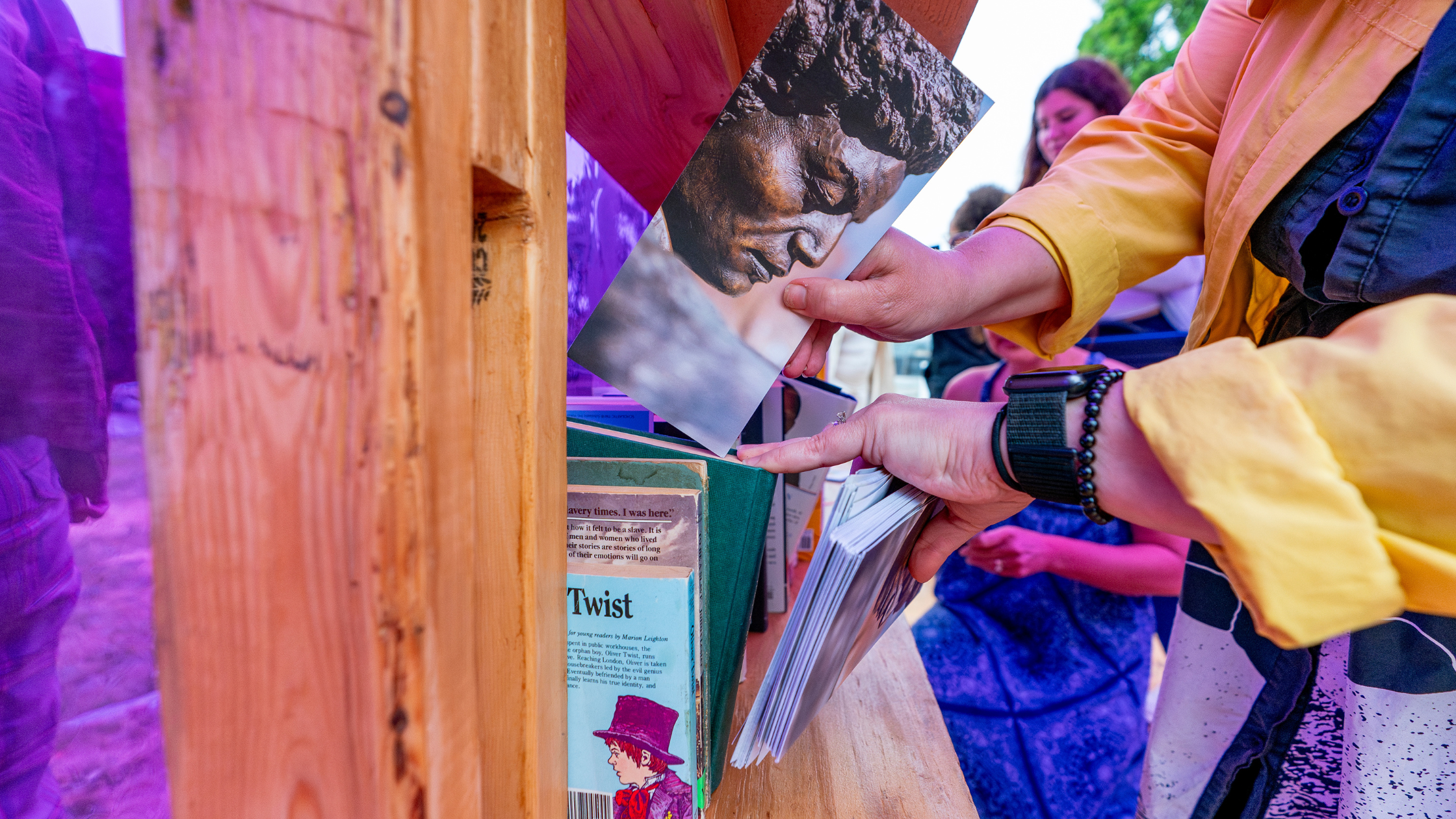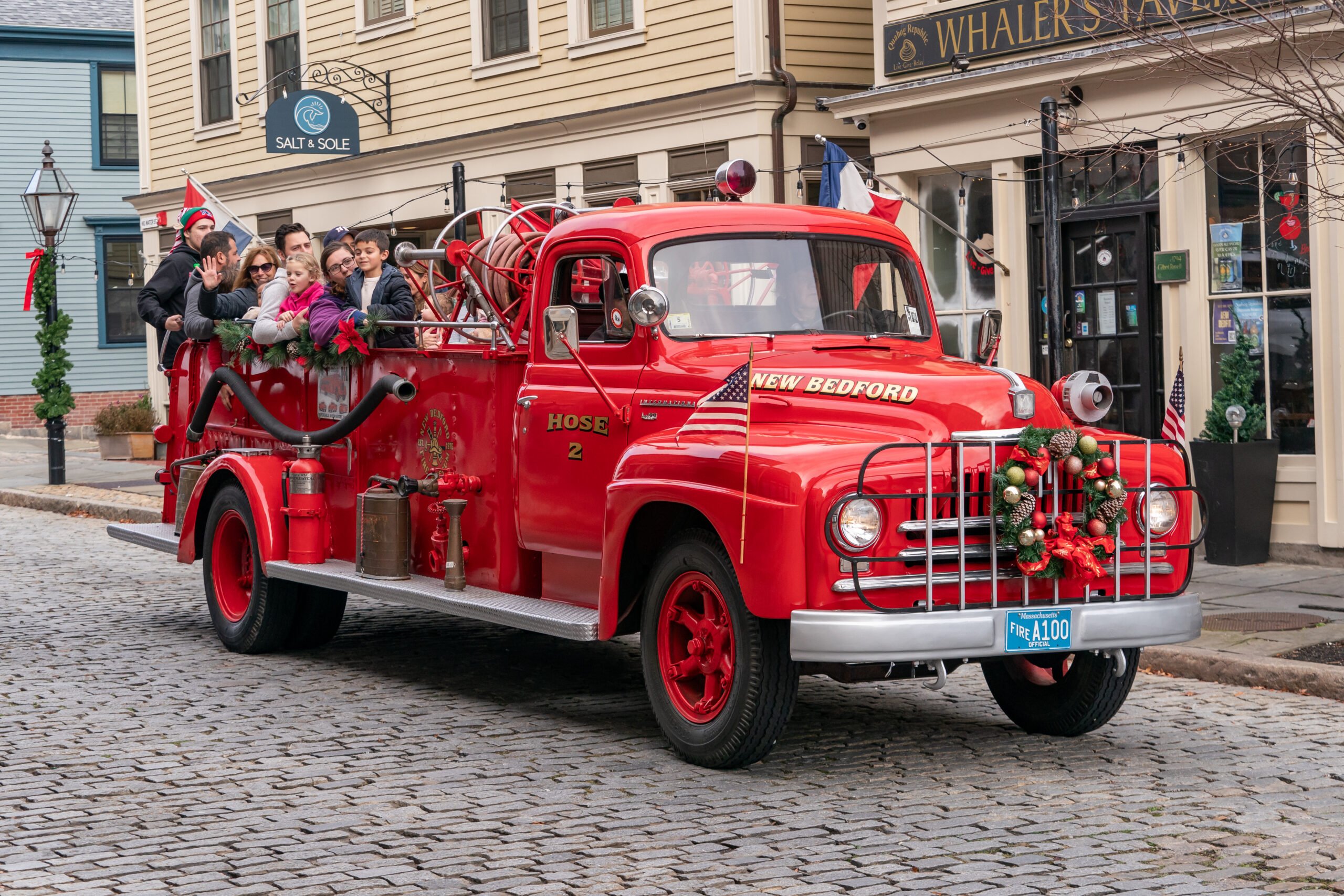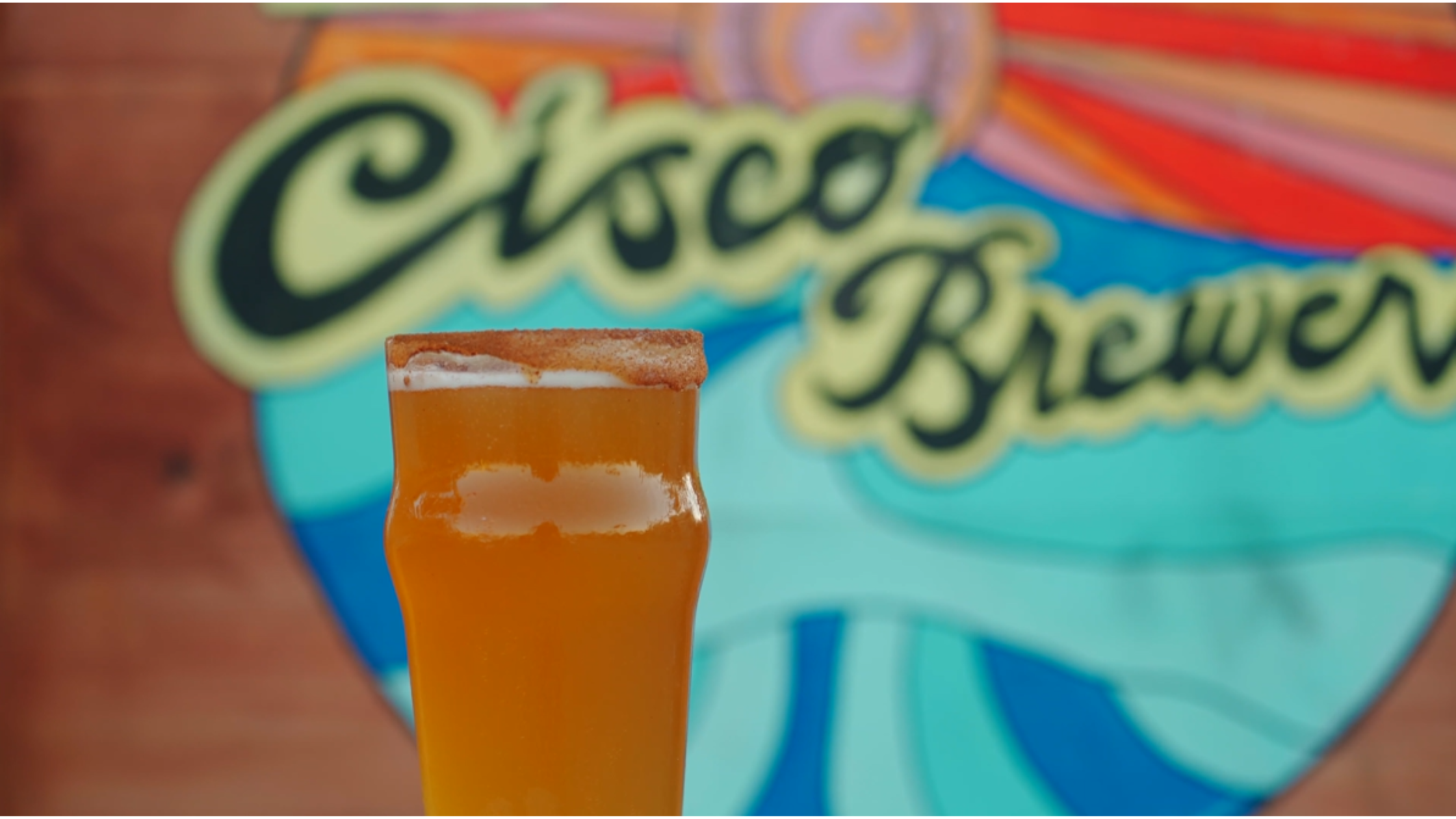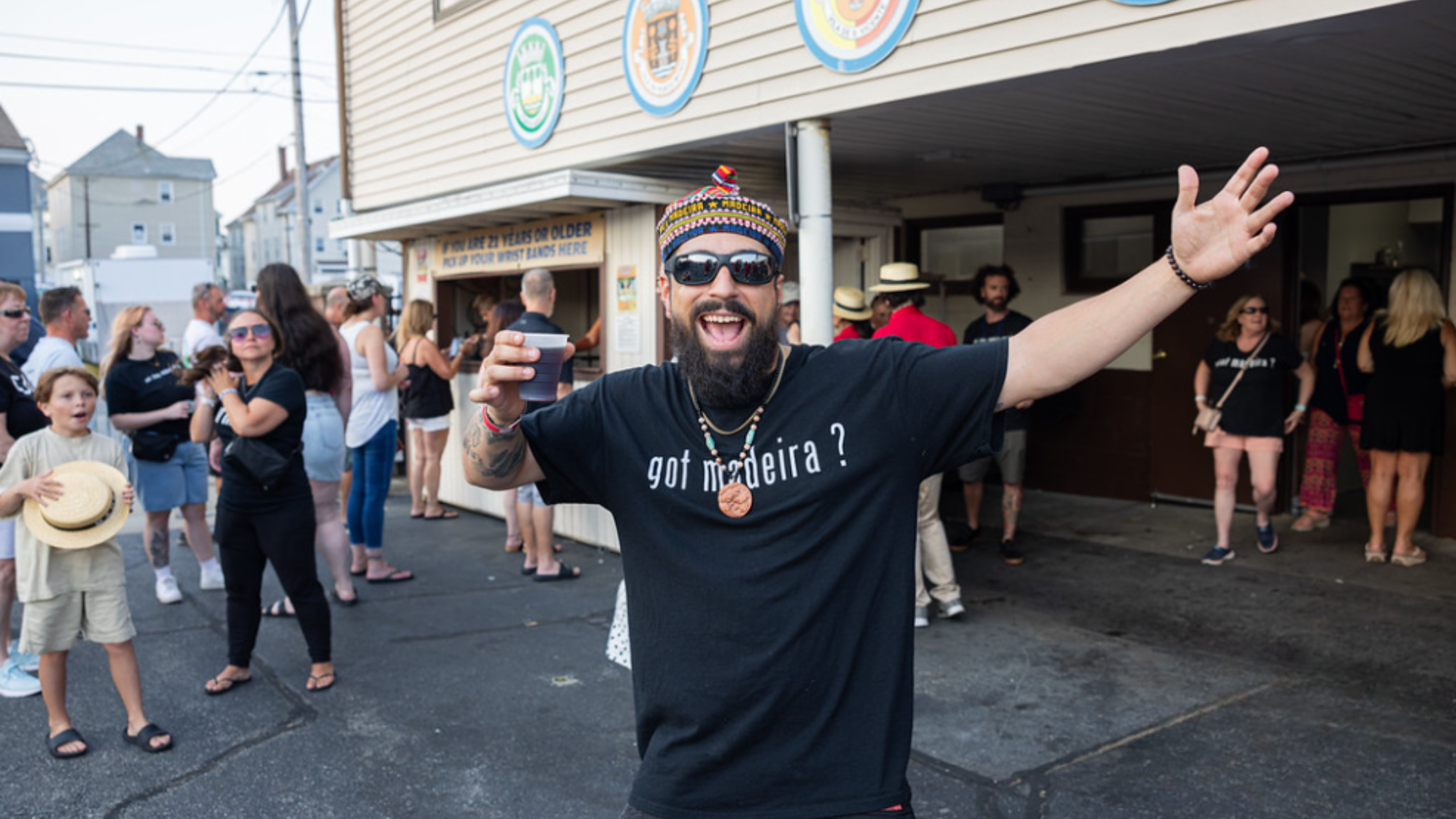Each summer, the Seaport Cultural District in New Bedford is imbued with the talent and creativity of local artists. The Seaport Art Walk, founded in 2013 by artist Jessica Bregoli, is the city’s first large-format outdoor public art installation. Facilitated by New Bedford Creative, the annual exhibition features a new theme each year. For 2025, the chosen theme ties into MA250 (what’s that?) and Explore New Bedford’s Visionary Voices campaign. This theme challenges artists to submit works that creatively interpret the many revolutionary ideas, people, and moments that have shaped New Bedford. The opening reception during July’s AHA! Night revealed a variety of approaches to the theme. These approaches create a dialogue with art, artifacts, locations, and other touchpoints of New Bedford history. Here’s how you can experience the Seaport Art Walk and Visionary Voices as a type of trail during your visit to the city.
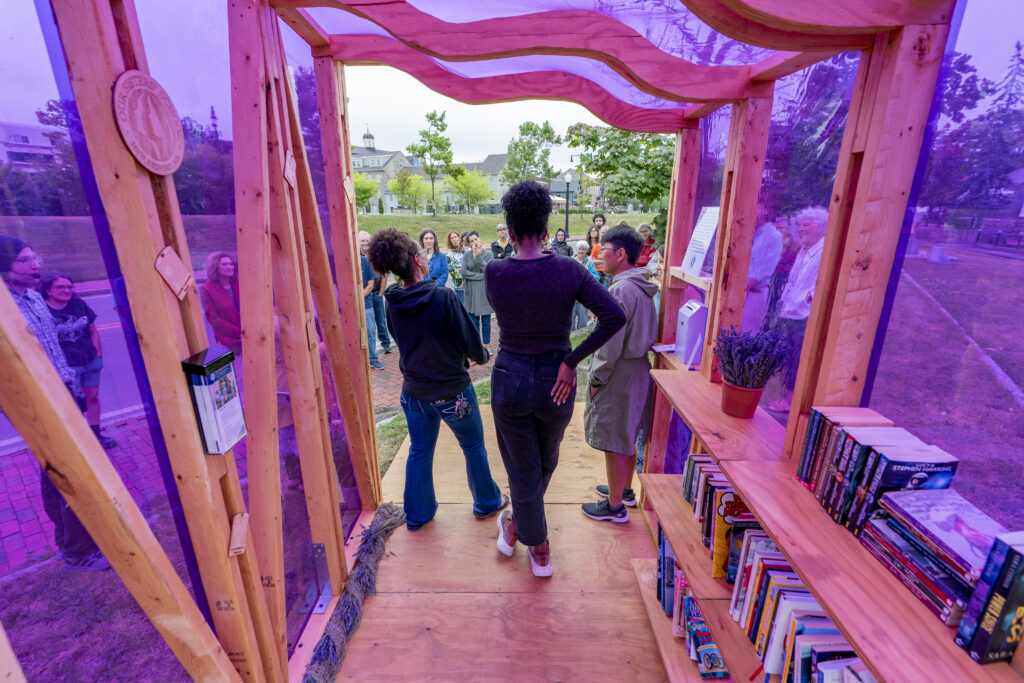
Agents of Change in the Seaport
Change-makers of the past forged New Bedford’s cultural tapestry. These trailblazers inspire artists and innovators today, such as the students at Our Sisters’ School. With guidance from Maya Bird-Murphy of the nonprofit Mobile Makers Boston, the students built an iconic piece called Changemakers Club. Their design creates a third space along the city’s working waterfront. This simple structure is wrapped on two sides and over the top with translucent vinyl. Therefore, their semi-permanent construction provides shelter while also maintaining visibility of the surrounding environment. Shelving holds books serving as a free library and a mailbox where visitors can leave an affirmation. Changemakers Club is a gathering space and a place for self-reflection. The work stands as an anchor, a safe haven, for the stories being told in the other works of art chosen for the 2025 Seaport Art Walk.
Revolution and Rights
Artist Jill Strait chose the subject of her painting, Mary “Polly” Johnson, a notable New Bedford change-maker. Johnson was recently celebrated in the short film Sweet Freedom by local filmmaker Alyssa Botelho. Like Botelho, Strait highlights the story of Johnson’s career as a confectioner and caterer. Johnson and her husband were free Black abolitionists who welcomed individuals who had escaped enslavement into their home. She used herbs and fruits that she grew in her garden in her candy, cakes, and ice cream. Strait arranges some of these culinary herbs and fruits around the silhouette portrait of Johnson in the middle of her painting. Visit the Nathan and Polly Johnson House and Abolition Row Park in the Abolition Row Historic District. Read more about Mary “Polly” Johnson and the film Sweet Freedom.
Dr. Marie Equi was another dynamic agent of change. She was a political advocate, fighting for fair wages and women’s right to vote. Equi worked in textile mills, witnessing the dire health conditions of workers firsthand. As a result of her experience, she decided to become a medical doctor. She provided women’s healthcare services that were illegal at the time and lived openly as a lesbian. In her signature artistic style, artist Mandy Fraser powerfully depicts Equi. Utilizing a black and white die-cut portrait of Equi, Fraser fabricates her clothing with colored graffiti-style words. This anchor text narrates Equi’s story for the viewer. Words on Fraser’s piece include “suffragette,” “mill worker,” and “labor rights activist.” Learn more about Dr. Equi in the New Bedford Whaling Museum’s project, “Lighting the Way: Historic Women of the SouthCoast,” which features a walking trail and has hosted several exhibitions at the museum.
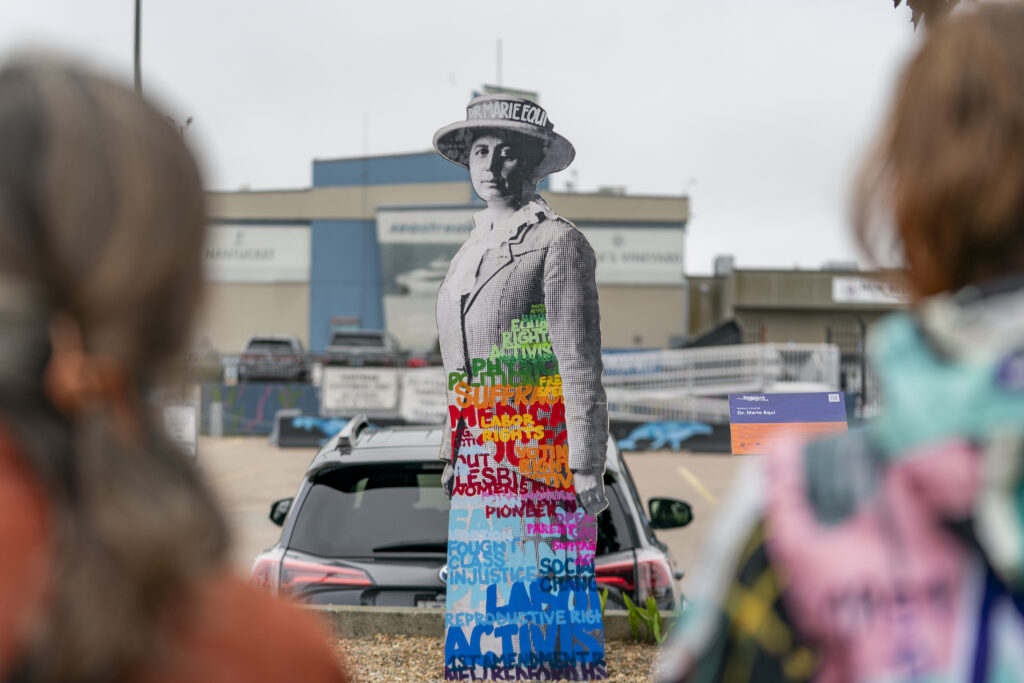
Women in Art
Artist Brooke Doherty honors a pioneer for women in professional art careers with her piece Convolution. Eliza Bierstadt was likely the first female art dealer in the United States, selling paintings out of the Ellis Art Gallery on William Street. Some of the works she sold were created by her brother, Albert Bierstadt, the famous landscape painter. Albert taught Eliza to paint butterflies by folding paper in half, mirroring the wings on each side. Doherty’s sculpture interprets evolution with a delicate twist of colors that emerge from the base. These spirals of steel and tulle reach up towards the top of the design where a butterfly, representing Eliza, spreads its wings. The location where Eliza sold paintings is now home to a boutique gift shop, The Bedford Merchant. View three Albert Bierstadt paintings on display in the City’s permanent art collection on the third floor of the Free Public Library.

The Evolution of Art in New Bedford
Weaving has a long history in New Bedford, dating back to the traditions of the Wampanoag. For the Wampanoag, weaving was both a form of expression and played a functional role in daily tasks. Later, in the nineteenth century, textiles pulled New Bedford back from economic uncertainty following the decline of the whaling industry. In 1895, the New Bedford Textile School was established to keep up with technological advances in textile manufacturing. This school led to the establishment of the University of Massachusetts Dartmouth. The university’s College of Visual and Performing Arts nurtured generations of artists, many of whom, consequently, contributed to New Bedford’s artistic community.
Ed McAloon’s sculpture, Weaving a Community, features multiple hands weaving a basket. In addition to referencing New Bedford’s historic connection to textiles, McAloon evokes the sense of community, woven together. Though the textile industry created unjust labor conditions, people found their voices with the strength of women like Equi and others featured on the Visionary Voices timelines. Several of New Bedford’s textile mills have been repurposed into shops, artist studios, and galleries. Visit Acushnet River Antiques in the Grinnell Mill or Antiques at the Cove and other local artisan shops at the Kilburn Mill at Clarks Cove.
This year, the Art Walk also has a digital presence on the Bloomberg Connects App alongside over 100 pieces of public art in New Bedford. Download the free app and search for New Bedford and access the Art Walk through the Seaport Cultural District Waterfront Trail. Every year, the Seaport Art Walk is on display from July through the end of October.
Photographs by Joshua Souza, Courtesy of New Bedford Creative.
